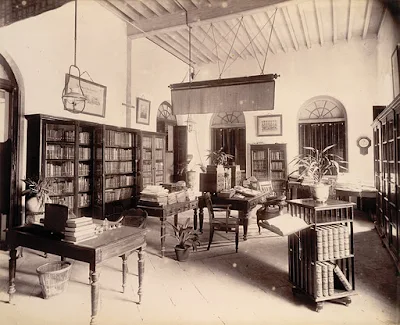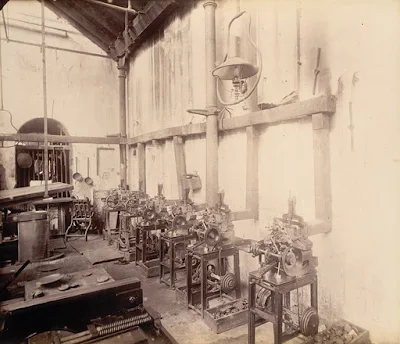Prince William, second-in-line to the throne, will be first British king with proven Indian ancestry,
The DNA analysis of saliva samples taken from the Duke of Cambridge's relatives have established a direct lineage between the 30-year-old prince and an Indian housekeeper on his mother Princess Diana's side.
It is his only non-European DNA and means he will become the first head of the Commonwealth with a clear genetic link to its most populous nation - India.
William is now likely to be encouraged to make his debut mission to India soon after the birth of his baby next month.
Researchers have uncovered the details of his lineage via a doomed relationship of William's Indian great-great-great-great-great grandmother.
Eliza Kewark was housekeeper to Prince William's great grandfather Theodore Forbes (1788-1820), a Scottish merchant who worked for the East India Company in the port town of Surat in Gujarat.
Eliza's mitochondrial DNA (mtDNA) was passed on by her daughters and granddaughters directly in an unbroken line to Princess Diana and then on to Prince William and Prince Harry.
Eliza is claimed to have been Armenian, possibly because her surname is rather like the Armenian name Kevork and letters from her to Forbes have been found which contain Armenian script.
This in turn suggests a degree of Armenian cultural heritage and the possibility that her father may have been of Armenian descent.
"But we believe that all the evidence we have gathered shows that her genetic heritage through her motherline is Indian," Britains DNA, a DNA ancestry testing company, said in a release.
"Princes William and Harry carry Eliza Kewark's markers but will not pass this Indian mtDNA onto their children, as mtDNA is only passed from mother to child," it added.
Jim Wilson, a genetics expert at the University of Edinburgh and Britains DNA who carried out the tests, said that Eliza's descendants had an incredibly rare type of mtDNA, inherited only from a mother.
It has so far been recorded in only 14 other people, 13 Indian and one Nepalese.
The revelation explains why the Scottish father of Eliza's children suddenly deserted her and sent their daughter, Katherine, to Britain at the age of six
ENGLISH LIFE IN INDIA:-

SURAT HARBOUR 1700'S
| Magnificence of the Sultan (Governor) at Suratte, from 'Voyages Celebres et Remarquables faits de Perse etc.', by Jean Albert de Mandelslo, 1727 |
Death of Bahadur Shah in front of Diu during negotiations with the Portuguese, in 1537. Akbar Nama, end of 16th century.


Transfer of Premier Port Status from Surat to Bombay 1687 CE
The following is a synopsis and short chronology of events related to the early years of the British take-over of Bombay:
In 1669, a council of eight members was chosen to assist the Company's President, five of whom were to reside in Surat. While the President was to hold the position of Governor of Surat and Bombay, he would reside at Surat - a condition that would change with time. On the one hand, the Company's factory at Muslim ruled Surat was under constant threat of Maratha raids, and there was not much the British could do at that time to mitigate the threat. On the other hand, Bombay, was an island in the possession of the English. Ever since the English government had given the Company possession of Bombay in 1668, Bombay increasing became a preferred candidate for the Company's main base. Finally in 1684, the British East India Company decided to transfer the chief seat of the company's trade from Surat to Bombay.
However, because of a mutiny of its troops in Bombay between 1683 and 1684, as well as a war between the English and Mughals, the actual transfer did not take place until 1687. In the meantime in 1685, the Company took steps to recover Salsette Island that had as part of the dowry been ceded by the Portuguese. Despite Portuguese reluctance to give up the island, the English sent in troops that succeeded to gaining control of Thana and Salsette Island. That in turn gave the Company the ability to act independently of the Mughals or local chiefs (or for that matter, the British Crown). To secure its independence and security, the Company began to strengthen its fortifications in Bombay and surrounding possessions in 1687. The position of Bombay within the Company was elevated to that of capital of the Company's Indian possessions and the residence of its Governor-General. As a result of the transfer of the Company's headquarters from Surat to Bombay, its ships to and from Europe would now drop anchor at Bombay rather than Surat. The move quickly shifted the claim of being India's premier port from Surat to Bombay. Trade to and from Surat, Calicut and Karwar were routed via Bombay and transported there on coastal vessels. Bombay, therefore not only became a principal port, but a hub port for most of the Company's Indian Trade. | ||||||||
| Dutch Factory at Surat as seen in April 1629. Plagerized / Reproduced by J.A. von Mandelso and labelled 'English factory' after an original etching by Pieter van den Broecke (1585-1640), a Dutch cloth merchant in the service of the Dutch East India Company in Korte Historiael ende Journaelsche Aenteyckeninghe published in Amsterdam, 1634. The only difference between the Mandelso & Broecke images is the distribution of people passing in front of the building. | ||||||||
| British East India Company Factory in Asia. Back view of a factory with high surrounding walls. In the foreground a tank, to the left the cemetery with large tombs. A sepoy sentry stands outside the wall and an English man sheltered by an umbrella and accompanied by servants is approaching the entrance. Painting 1790-1800. | ||||||||
 | ||||||||
ENGLISH CEMETERY IN SURAT
The Cemetery which has the earliest mausoleums from 1659. Many British Raj officers & their family members from the 17th till 19th century rest in peace here. The monuments are strongly influenced by the Indian and Arabic Architecture.The pinnacles as minarets and the pointing arch of the windows resemble a semi-Islamic style.
Surat was one of the earliest strongholds of the British Kingdom. The English Cemetery is where many of the distinguished dignitaries of the Surati British Raj rest in peace.
Dutch & Armenian traders came to India in the early parts of 17th century &; left in 1825. In a small dirty bylane of Rampura, lies their past
India in 1765 and 1805 showing East India Company Territories
| Governor-General | Period of Tenure | Events |
|---|---|---|
| Warren Hastings | 20 October 1773–1 February 1785 | Bengal famine of 1770 (1769–1773) Rohilla War (1773–1774) First Anglo-Maratha War (1777–1783) Chalisa famine (1783–84)
Second Anglo-Mysore War (1780–1784)
|
| Charles Cornwallis | 12 September 1786–28 October 1793 | Cornwallis Code (1793) Permanent Settlement Cochin become semi-protected States under British (1791) Third Anglo-Mysore War (1789–1792) Doji bara famine (1791–92) Separation of judicial and revenue administrations |
| John Shore | 28 October 1793–March 1798 | East India Company Army reorganized and down-sized. Jaipur (1794) & Travancore (1795) come under British protection. Andaman Islands occupied (1796) Company took control of coastal region Ceylon from Dutch (1796). |
| Richard Wellesley | 18 May 1798–30 July 1805 | Nizam of Hyderabad becomes first State to sign Subsidiary alliance introduced by Wellesley (1798). Fourth Anglo-Mysore War (1798–1799)
Nawab of Oudh cedes Gorakhpur and Rohilkhand divisions; Allahabad,Fatehpur, Cawnpore, Etawah, Mainpuri, Etah districts; part of Mirzapur; andterai of Kumaun (Ceded Provinces, 1801)
Treaty of Bassein signed by Peshwa Baji Rao II accepting Subsidiary Alliance Battle of Delhi (1803). Second Anglo-Maratha War (1803–1805) Remainder of Doab and Agra division, parts of Bundelkhand annexed fromMaratha Empire (1805). Ceded and Conquered Provinces established (1805) |
| Charles Cornwallis(second term) | 30 July 1805–5 October 1805 | Financial strain in East India Company after costly campaigns. Cornwallis reappointed to bring peace, but dies in Ghazipur. |
| George Hilario Barlow (locum tenens) ------------------------------------------------- | 10 October 1805–31 July 1807 | Vellore Mutiny (July 10, 1806) |















